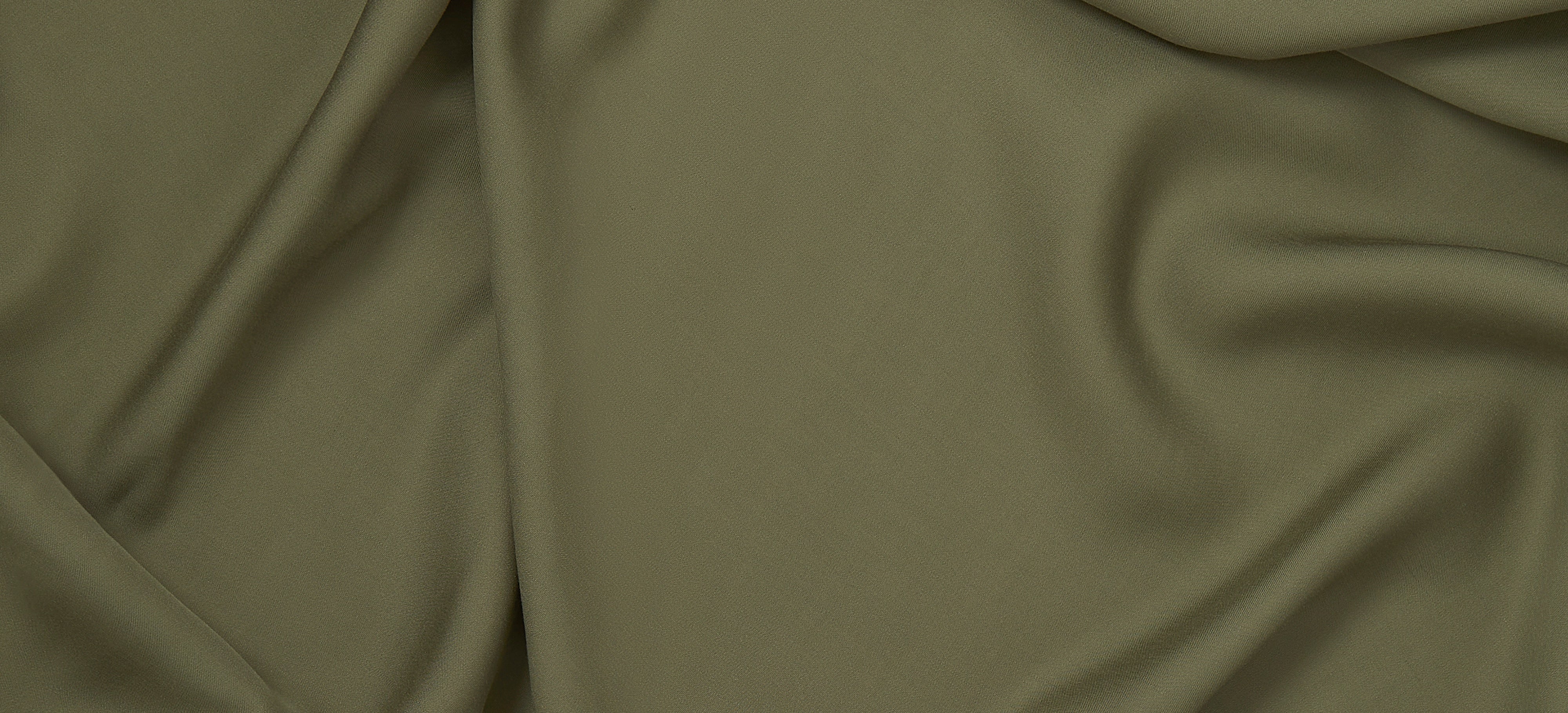
Where Are Bamboo Products Made? Global Production & Sustainable Sourcing
Bamboo Production and Sourcing
Global bamboo production is a big business; this wonder plant is grown on a mass scale in a few different countries across the globe. It thrives in mostly sunny conditions, preferring a moist but well-drained soil. Bamboo manufacturing also requires a lot of space, given how rapidly the plant grows!
When it comes to bamboo manufacturing countries, China is the biggest hitter and probably where you think of in terms of global bamboo product production. But other countries are in on the action too: Japan, Taiwan, and many countries across South East Asia. The humid weather is ideal. It can be grown in other countries like the USA, but bamboo sourcing statistics show that the majority is imported from Asian countries.
Climate is one of the main factors affecting how bamboo is sourced and products are manufactured; because Asia has the best conditions for growing the plant on a mass scale, it makes sense for it to be sourced from these nations and imported to countries which have the highest demand for it. India is the biggest importer of bamboo, followed by the Netherlands and the USA as well as the UK, Italy, and other European countries. When it comes to bamboo products, sourcing the raw material is where it all begins.
Sustainable bamboo products are gaining popularity at an incredible rate; the production process is really eco-friendly, because there is no need for harsh pesticides to encourage quick growth. The plant does that itself! It requires a third of the water that cotton does, and self-regenerates when cut down for bamboo products manufacturing purposes.

![[MattressTopper] Panda London Memory Foam Bamboo Mattress Topper package box](http://pandalondon.com/cdn/shop/files/Bamboo_Mattress_Topper_Package_Box.webp?v=1742301823&width=1500)
![[MattressTopper] Panda London Memory Foam Bamboo Mattress Topper on the floor](http://pandalondon.com/cdn/shop/products/Panda-Memory-Foam-Bamboo-Mattress-Topper-Yoga-e1624045454555.jpg?v=1758795458&width=1000)
![[MattressTopper] Bamboo Mattress Topper Lifestyle Image with Memory Foam Pillows Product Page](http://pandalondon.com/cdn/shop/files/Bamboo_Mattress_Topper_Lifestyle_Image_with_Memory_Foam_Pillows_Product_Page.webp?v=1758795458&width=800)
![[MattressTopper] Bamboo Mattress Topper Lifestyle Image with Bamboo Pillows In the Garden room Product Page](http://pandalondon.com/cdn/shop/files/Bamboo_Mattress_Topper_Lifestyle_Image_with_Bamboo_Pillows_In_the_Garden_room_Product_Page.webp?v=1758795458&width=800)
![[MattressTopper] Panda London Memory Foam Bamboo Mattress Topper side](http://pandalondon.com/cdn/shop/files/Mattress_Topper_Isolated_-_resized.jpg?v=1758795458&width=800)
![[HybridMattressPro] Main Image for Hybrid Bamboo Mattress Pro with all awards](http://pandalondon.com/cdn/shop/files/Hybrid_Bamboo_Mattress_Pro_Main_product_Image_with_awards.webp?v=1753971649&width=1000)
![[HybridMattressPro] Breathable Hybrid Bamboo Mattress](http://pandalondon.com/cdn/shop/products/Breathable-Hybrid-Bamboo-Mattress.jpg?v=1753971649&width=1920)
![[HybridMattressPro] Hybrid Bamboo Mattress Pro Cover Zip](http://pandalondon.com/cdn/shop/files/Hybrid_Bamboo_Mattress_Cover.jpg?v=1753971649&width=800)
![[HybridMattressPro] Panda Hybrid Bamboo Mattress Pro](http://pandalondon.com/cdn/shop/files/Hybrid_Bambo_Memory_Foam_Mattress_-_BioCell_Foam_x.jpg?v=1755095108&width=800)
![[HybridMattressPro] Couple on a Hybrid Bamboo Mattress Pro](http://pandalondon.com/cdn/shop/files/Hybrid_Bamboo_Mattress_Couple.jpg?v=1753971649&width=800)
![[CloudDuvet] Panda London The Cloud Bamboo Duvet Packaging](http://pandalondon.com/cdn/shop/products/Panda-London-The-Cloud-Bamboo-Duvet-Panda-Life-scaled_00a651ad-4ca3-4105-b520-12a94c1a4f71.jpg?v=1713363286&width=1920)
![[CloudDuvet] Panda London The Cloud Bamboo Duvet Rolled](http://pandalondon.com/cdn/shop/products/Duvet-Listing-Images03.jpg?v=1764079307&width=1000)
![[CloudDuvet] Panda London The Cloud Bamboo Duvet Girl Huggin a Duvet on the Bed](http://pandalondon.com/cdn/shop/files/Cloud_Bamboo_Duvet_-_Lady_Hugging_it_on_Bed_LifestyleImage.jpg?v=1764079307&width=1000)
![[CloudDuvet] Panda London The Cloud Bamboo Duvet Guy In the Air with Cloud Bamboo Duvet](http://pandalondon.com/cdn/shop/files/GuyonaHybridBambooMattresswithCloudDuvet.jpg?v=1764079307&width=2000)
![[CloudDuvet] Panda Cloud Duvet Winter on the bed lifestyle image](http://pandalondon.com/cdn/shop/files/Panda_Cloud_Duvet_Winter_on_the_Bed_Lifestyle-1_image.jpg?v=1764079307&width=1000)
![[BBWhite] White 100% Bamboo Bedding](http://pandalondon.com/cdn/shop/files/Pure_White_Full_Bed.webp?v=1719581797&width=1000)
![[BBWhite] White 100% Bamboo Bedding Texture](http://pandalondon.com/cdn/shop/files/100_Bamboo_Bedding_-_Pure_White_-_Close_Up_02.webp?v=1762879591&width=1000)
![[BBWhite] White 100% Bamboo Bedding Woman in bed sleeping](http://pandalondon.com/cdn/shop/files/100-Bamboo-Bedding-Set-Pure-White-BB.webp?v=1762879591&width=768)
![[BBWhite] White 100% Bamboo Bedding Woman Duvet cover buttons](http://pandalondon.com/cdn/shop/files/hand_and_buttons_1.webp?v=1762879591&width=1000)
![[BBWhite] White 100% Bamboo Bedding Woman in bed looking and smiling-](http://pandalondon.com/cdn/shop/files/SatonMadeBed-White100_BambooBedding-white_-_BB_SideShot1000x1000.webp?v=1762879591&width=980)
![[BBUrbanGrey] Urban Grey 100% Bamboo Bedding](http://pandalondon.com/cdn/shop/files/Made_Bed_-_Urban_Grey_-_Wide_Shot_2_1_1.webp?v=1762880019&width=1000)
![[BBUrbanGrey] Cloud Duvet Urban Grey 100% Bamboo Bedding Set](http://pandalondon.com/cdn/shop/files/Cloud_Duvet_-_Grey_-_Close_up_2.webp?v=1762880019&width=1000)
![[BBUrbanGrey] Urban Grey 100% Bamboo Bedding Set Woman sitting on the bed](http://pandalondon.com/cdn/shop/files/Sat_in_Bed_-_Grey_100__Bamboo_Bedding_-_Wide_Shot.webp?v=1762880019&width=1000)
![[BBUrbanGrey] Urban Grey 100% Bamboo Bedding Set Woman Duvet buttons Panda London](http://pandalondon.com/cdn/shop/files/hand_buttons_grey_bedding_1.webp?v=1762880019&width=1000)
![[BBUrbanGrey] Woman Sitting on the Bamboo Bedding with coffee](http://pandalondon.com/cdn/shop/files/SatonMadeBed-White100_BambooBedding-SideShot1000x1000.jpg?v=1762880019&width=1000)
![[BBNavyBlue] Deep Sea Navy Blue 100% Bamboo Bedding](http://pandalondon.com/cdn/shop/files/Made_Bed_-_Navy_-_Wide_Shot_3_copy.webp?v=1762879591&width=1000)
![[BBNavyBlue] Deep Sea Navy Blue 100% Bamboo Bedding Texture](http://pandalondon.com/cdn/shop/files/Cloud_Duvet_-_Navy_-_Close_up_2.webp?v=1762880019&width=1000)
![[BBNavyBlue] Deep Sea Navy Blue 100% Bamboo Bedding Woman Sitting on the bed](http://pandalondon.com/cdn/shop/files/Sat_Up_in_Bed_-_Navy_100__Bamboo_Bedding_-_Hands_on_Bed.webp?v=1762880019&width=1000)
![[BBNavyBlue] Deep Sea Navy Blue 100% Bamboo Bedding Duvet Cover Buttons](http://pandalondon.com/cdn/shop/files/Cloud_Duvet_Cover_Buttons_-_Deep_Sea_Navy.webp?v=1762880019&width=1000)
![[BBNavyBlue] Deep Sea Navy Blue 100% Bamboo Bedding Woman sitting on the bed looking away](http://pandalondon.com/cdn/shop/files/SatonMadeBed-White100_BambooBedding-SideShot1000x1000-001.webp?v=1762880019&width=980)
![[BBPink] Vintage Pink Blue 100% Bamboo Bedding](http://pandalondon.com/cdn/shop/files/Made_Bed_-_Pink_-_Wide_Shot_copy.webp?v=1762879591&width=1000)
![[BBPink] Vintage Pink Texture 100% Bamboo Bedding](http://pandalondon.com/cdn/shop/files/Cloud_Duvet_-_Pink_-_Close_up_2.webp?v=1762880019&width=1000)
![[BBPink] Vintage Pink Woman Sitting on the 100% Bamboo Bedding](http://pandalondon.com/cdn/shop/files/Sat_Up_in_Bed_-_Pink_-_Hands_on_Bed.webp?v=1762880019&width=1000)
![[BBPink] Vintage Pink Woman Sitting on the 100% Bamboo Bedding Duvet Cover](http://pandalondon.com/cdn/shop/files/Cloud_Duvet_Cover_Buttons_-_Vintage_Pink.webp?v=1762880019&width=1000)
![[BBPink] Vintage Pink Woman Sitting on the 100% Bamboo Bedding Woman looking far away](http://pandalondon.com/cdn/shop/files/SatonMadeBed-White100_BambooBedding-SideShot1000x1000-001_Vintage_Pink.webp?v=1762880019&width=980)
![[BBGrey] Light Grey 100% Bamboo Bedding](http://pandalondon.com/cdn/shop/files/Made_Bedding_in_Bedroom_-_Urban_Grey_-_Wide_Shot.webp?v=1762879591&width=1000)
![[BBGrey] Light Grey 100% Bamboo Bedding texture](http://pandalondon.com/cdn/shop/files/Texture17.webp?v=1762880019&width=1000)
![[BBGrey] Light Grey 100% Bamboo Bedding with Woman smiling](http://pandalondon.com/cdn/shop/files/Sat_Up_in_Bed_-_Grey_-_Hands_on_Bed.webp?v=1762880019&width=1000)
![[BBGrey] Light Grey 100% Bamboo Bedding with Duvet Cover buttons](http://pandalondon.com/cdn/shop/files/Cloud_Duvet_Cover_Buttons_-_Quiet_Grey.webp?v=1762880019&width=1000)
![[BBGrey] Light Grey 100% Bamboo Bedding with Woman smiling and sitting coffee](http://pandalondon.com/cdn/shop/files/SatonMadeBed-White100_BambooBedding-SideShot1000x1000-002-_Grey.webp?v=1762880019&width=980)
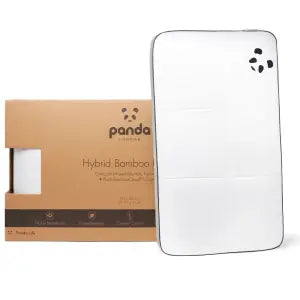 Hybrid Bamboo Pillow
Hybrid Bamboo Pillow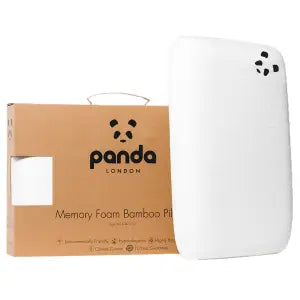 Memory Foam Bamboo Pillow
Memory Foam Bamboo Pillow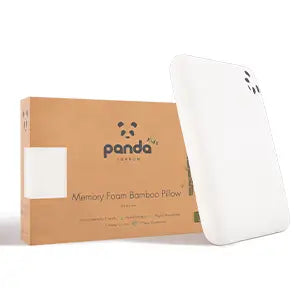 Kids Memory Foam Bamboo Pillow
Kids Memory Foam Bamboo Pillow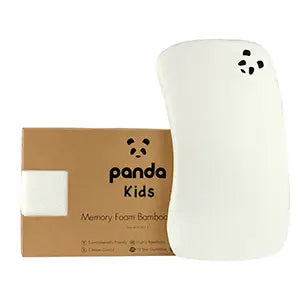 Baby Memory Foam Bamboo Pillow
Baby Memory Foam Bamboo Pillow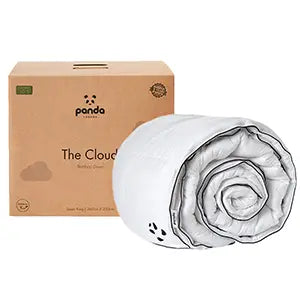 Panda Cloud Duvet
Panda Cloud Duvet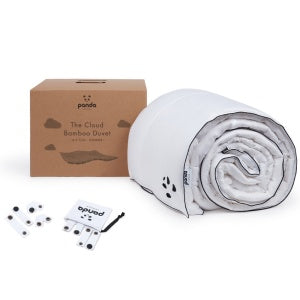 Bamboo Summer Duvet
Bamboo Summer Duvet Kids Cloud Duvet
Kids Cloud Duvet

![[BSUrbanGrey] Bath Sheet Bath Range Panda London Urban Grey](http://pandalondon.com/cdn/shop/files/01BathSheetBathRangePandaLondonUrbanGrey.webp?v=1750022805&width=1080)
![[BSUrbanGrey] Bath Sheet Bath Range Panda London Urban Grey Full Open Sheet](http://pandalondon.com/cdn/shop/files/02BathSheetBathRangePandaLondonFullSheetUrbanGrey.webp?v=1750022805&width=1080)
![[BSUrbanGrey] Bath Sheet Bath Range Panda London Urban Grey Full Stacked in Group](http://pandalondon.com/cdn/shop/files/03BathSheetBathRangePandaLondonStackedTowelsUrbanGreySideView.webp?v=1750022805&width=768)
![[BSUrbanGrey] Bath Sheet Bath Range Panda London Urban Grey Side View Grouped Towels](http://pandalondon.com/cdn/shop/files/04BathSheetBathRangePandaLondonStackedTowelsUrbanGrey.webp?v=1750022805&width=1000)
![[BSUrbanGrey] Bath Sheet Bath Range Panda London Urban Grey Side View Grouped Towels and Rolled](http://pandalondon.com/cdn/shop/files/05BathSheetBathRangePandaLondonStackedTowelsUrbanGreyRolled.webp?v=1750022805&width=1039)
![[BSUrbanGrey] Bath Sheet Bath Range Panda London Urban Grey Side View Grouped Towels on The Chair Lifestyle Image](http://pandalondon.com/cdn/shop/files/06BathSheetBathRangePandaLondonStackedTowelsUrbanGreyGrouped.webp?v=1750022805&width=1000)
![[BTUrbanGrey] Bath Towel Bath Range Panda London Urban Grey](http://pandalondon.com/cdn/shop/files/01_Bath_Towel_Bath_Range_Panda_London_Urban_Grey.webp?v=1750022805&width=1080)
![[BTUrbanGrey] Bath Towel Bath Range Panda London Urban Grey Full Opened](http://pandalondon.com/cdn/shop/files/02_Bath_Towel_Bath_Range_Panda_London_Urban_Grey_Full_Towel.webp?v=1750022805&width=1080)
![[BTUrbanGrey] Bath Towel Bath Range Panda London Urban Grey Stacked in Group](http://pandalondon.com/cdn/shop/files/03_Bath_Towel_Bath_Range_Panda_London_Stacked_Towels_Urban_Grey_Side_View.webp?v=1750022805&width=768)
![[BTUrbanGrey] Bath Towel Bath Range Panda London Urban Grey Stacked Side View Group](http://pandalondon.com/cdn/shop/files/04_Bath_Towel_Bath_Range_Panda_London_Stacked_Towels_Urban_Grey.webp?v=1750022805&width=1000)
![[BTUrbanGrey] Bath Towel Bath Range Panda London Urban Grey Rolled Stacked](http://pandalondon.com/cdn/shop/files/05_Bath_Towel_Bath_Range_Panda_London_Stacked_Towels_Urban_Grey_Rolled.webp?v=1750022805&width=1039)
![[BTUrbanGrey] Bath Towel Bath Range Panda London Urban Grey Stacked on the Chair Lifestyle image](http://pandalondon.com/cdn/shop/files/06_Bath_Towel_Bath_Range_Panda_London_Stacked_Towels_Urban_Grey_Grouped.webp?v=1750022805&width=1000)
![[HTUrbanGrey] Hand Towel Bath Range Panda London Urban Grey 1](http://pandalondon.com/cdn/shop/files/01_Hand_Towel_Bath_Range_Panda_London_Urban_Grey.webp?v=1750022805&width=1080)
![[HTUrbanGrey] Hand Towel Bath Range Panda London Urban Grey Full Opened 1](http://pandalondon.com/cdn/shop/files/02_Hand_Towel_Bath_Range_Panda_London_Urban_Grey_Full_Opened.webp?v=1750022805&width=1080)
![[HTUrbanGrey] Hand Towel Bath Range Panda London Urban Grey Stacked in Group all four 1](http://pandalondon.com/cdn/shop/files/03_Hand_Towel_Bath_Range_Panda_London_Stacked_Towels_Urban_Grey_Side_View.webp?v=1750022805&width=768)
![[HTUrbanGrey] Hand Towel Bath Range Panda London Urban Grey Stacked Grouped Side View 1](http://pandalondon.com/cdn/shop/files/04_Hand_Towel_Bath_Range_Panda_London_Stacked_Towels_Urban_Grey.webp?v=1750022805&width=1000)
![[HTUrbanGrey] Hand Towel Bath Range Panda London Urban Grey Rolled in Group 1](http://pandalondon.com/cdn/shop/files/05_Hand_Towel_Bath_Range_Panda_London_Stacked_Towels_Urban_Grey_Rolled.webp?v=1750022805&width=1039)
![[HTUrbanGrey] Hand Towel Bath Range Panda London Urban Grey On the Chair Lifestyle image 1](http://pandalondon.com/cdn/shop/files/06_Hand_Towel_Bath_Range_Panda_London_Stacked_Towels_Urban_Grey_Grouped.webp?v=1750022805&width=1000)
![[BSInkColour] Bath Sheet Bath Range Panda London Ink Colour](http://pandalondon.com/cdn/shop/files/01_Bath_Sheet_Bath_Range_Panda_London_Ink_Colour.webp?v=1750022805&width=1080)
![[BSInkColour] Bath Sheet Bath Range Panda London Ink Colour Full Sheet Opened](http://pandalondon.com/cdn/shop/files/02_Bath_Sheet_Bath_Range_Panda_London_Ink_Colour_Full_Sheet_Opened.webp?v=1750022805&width=1080)
![[BSInkColour] Bath Sheet Bath Range Panda London Ink Colour Stacked in Group](http://pandalondon.com/cdn/shop/files/03_Bath_Sheet_Bath_Range_Panda_London_Ink_Colour_Full_Towels_Grouped.webp?v=1750022805&width=1225)
![[BSInkColour] Bath Sheet Bath Range Panda London Ink Colour Side View](http://pandalondon.com/cdn/shop/files/04_Bath_Sheet_Bath_Range_Panda_London_Ink_Colour_Side_View_All_Towels.webp?v=1750022805&width=1000)
![[BSInkColour] Bath Sheet Bath Range Panda London Ink Colour Rolled in Group](http://pandalondon.com/cdn/shop/files/05_Bath_Sheet_Bath_Range_Panda_London_Ink_Colour_FoldedStacked.webp?v=1750022805&width=768)
![[BSInkColour] Bath Sheet Bath Range Panda London Ink Colour Stacked on the Chair Lifestyle Image](http://pandalondon.com/cdn/shop/files/06_Bath_Sheet_Bath_Range_Panda_London_Stacked_Towels_Ink_Colour_Grouped_on_the_Chair.webp?v=1750022805&width=768)
![[BTInkColour] Bath Towel Bath Range Panda London Ink Colour](http://pandalondon.com/cdn/shop/files/01_Bath_Towel_Bath_Range_Panda_London_Ink_Colour.webp?v=1750022805&width=1080)
![[BTInkColour] Bath Towel Bath Range Panda London Ink Colour Full Opene Bath Towel](http://pandalondon.com/cdn/shop/files/02_Bath_Towel_Bath_Range_Panda_London_Ink_Colour_Full_Towel.webp?v=1750022805&width=1080)
![[BTInkColour] Bath Towel Bath Range Panda London Ink Colour STacked in a Group](http://pandalondon.com/cdn/shop/files/03_Bath_Towel_Bath_Range_Panda_London_Ink_Colour_Full_Towels_Grouped.webp?v=1750022805&width=1225)
![[BTInkColour] Bath Towel Bath Range Panda London Ink Colour Side View](http://pandalondon.com/cdn/shop/files/04_Bath_Towel_Bath_Range_Panda_London_Ink_Colour_Side_View_All_Towels.webp?v=1750022805&width=1000)
![[BTInkColour] Bath Towel Bath Range Panda London Ink Colour Rolled Towels](http://pandalondon.com/cdn/shop/files/05_Bath_Towel_Bath_Range_Panda_London_Ink_Colour_FoldedStacked.webp?v=1750022805&width=768)
![[BTInkColour] Bath Towel Bath Range Panda London Ink Colour Stacked on the Chair](http://pandalondon.com/cdn/shop/files/06_Bath_Towel_Bath_Range_Panda_London_Stacked_Towels_Ink_Colour_Grouped_on_the_Chair.webp?v=1750022805&width=768)
![[HTInkColour] Hand Towel Bath Range Panda London Ink Colour](http://pandalondon.com/cdn/shop/files/01_Hand_Towel_Bath_Range_Panda_London_Ink_Colour.webp?v=1750022805&width=1080)
![[HTInkColour] Hand Towel Bath Range Panda London Ink Colour Full Opened](http://pandalondon.com/cdn/shop/files/02_Hand_Towel_Bath_Range_Panda_London_Ink_Colour_Full_Towel.webp?v=1750022805&width=1080)
![[HTInkColour] Hand Towel Bath Range Panda London Ink Colour Stacked grouped Face View](http://pandalondon.com/cdn/shop/files/03_Hand_Towel_Bath_Range_Panda_London_Ink_Colour_Full_Towels_Grouped.webp?v=1750022805&width=1225)
![[HTInkColour] Hand Towel Bath Range Panda London Ink Colour Stacked side View](http://pandalondon.com/cdn/shop/files/04_Hand_Towel_Bath_Range_Panda_London_Ink_Colour_Side_View_All_Towels.webp?v=1750022805&width=1000)
![[HTInkColour] Hand Towel Bath Range Panda London Ink Colour Rolled Towels](http://pandalondon.com/cdn/shop/files/05_Hand_Towel_Bath_Range_Panda_London_Ink_Colour_FoldedStacked.webp?v=1750022805&width=768)
![[HTInkColour] Hand Towel Bath Range Panda London Ink Colour Lifestyle Image](http://pandalondon.com/cdn/shop/files/06_Hand_Towel_Bath_Range_Panda_London_Stacked_Towels_Ink_Colour_Grouped_on_the_Chair.webp?v=1750022805&width=768)
![[BSWhite] Bath Sheet Bath Range Panda London Urban Grey](http://pandalondon.com/cdn/shop/files/01_Bath_Sheet_Bath_Range_Panda_London_Pure_White.webp?v=1750022805&width=1080)
![[BSWhite] Bath Sheet Bath Range Panda London Urban Grey Full Opened](http://pandalondon.com/cdn/shop/files/02_Bath_Sheet_Bath_Range_Panda_London_Full_Sheet_Pure_White.webp?v=1750022805&width=1080)
![[BSWhite] Bath Sheet Bath Range Panda London Urban Grey Full Stacked Grouped](http://pandalondon.com/cdn/shop/files/03_Bath_Sheet_Bath_Range_Panda_London_Stacked_Towels_Pure_White_Side_View.webp?v=1750022805&width=1225)
![[BSWhite] Bath Sheet Bath Range Panda London Urban Grey Side View](http://pandalondon.com/cdn/shop/files/04_Bath_Sheet_Bath_Range_Panda_London_Stacked_Towels_Pure_White.webp?v=1750022805&width=1225)
![[BSWhite] Bath Sheet Bath Range Panda London Urban Grey Rolled Stacked](http://pandalondon.com/cdn/shop/files/05_Bath_Sheet_Bath_Range_Panda_London_Stacked_Towels_Pure_White.webp?v=1750022805&width=1039)
![[BSWhite] Bath Sheet Bath Range Panda London Urban Grey Lifestyle Image](http://pandalondon.com/cdn/shop/files/06_Bath_Sheet_Bath_Range_Panda_London_Stacked_Towels_Pure_White_Grouped.webp?v=1750022805&width=1225)
![[BTWhite] Bath Towel Bath Range Panda London Pure White](http://pandalondon.com/cdn/shop/files/01_Bath_Towel_Bath_Range_Panda_London_Pure_White.webp?v=1750022805&width=1080)
![[BTWhite] Bath Towel Bath Range Panda London Pure White Full Open Sheet](http://pandalondon.com/cdn/shop/files/02_Bath_Towel_Bath_Range_Panda_London_Pure_White_Full_Open.webp?v=1750022805&width=1080)
![[BTWhite] Bath Towel Bath Range Panda London Pure White Stacked Gourped](http://pandalondon.com/cdn/shop/files/03_Bath_Towel_Bath_Range_Panda_London_Stacked_Towels_Pure_White_Side_View.webp?v=1750022805&width=1225)
![[BTWhite] Bath Towel Bath Range Panda London Pure White Side View](http://pandalondon.com/cdn/shop/files/04_Bath_Towel_Bath_Range_Panda_London_Stacked_Towels_Pure_White.webp?v=1750022805&width=1225)
![[BTWhite] Bath Towel Bath Range Panda London Pure White Rolled Stacked](http://pandalondon.com/cdn/shop/files/05_Bath_Towel_Bath_Range_Panda_London_Stacked_Towels_Pure_White.webp?v=1750022805&width=1039)
![[BTWhite] Bath Towel Bath Range Panda London Pure White Lifestyle Stacked on the Chair](http://pandalondon.com/cdn/shop/files/06_Bath_Towel_Bath_Range_Panda_London_Stacked_Towels_Pure_White_Grouped.webp?v=1750022805&width=1225)
![[HTWhite] Hand Towel Bath Range Panda London Pure White](http://pandalondon.com/cdn/shop/files/01_Hand_Towel_Bath_Range_Panda_London_Pure_White.webp?v=1750022805&width=1080)
![[HTWhite] Hand Towel Bath Range Panda London Pure White Full Sheet](http://pandalondon.com/cdn/shop/files/02_Hand_Towel_Bath_Range_Panda_London_Pure_White_Open_Towel.webp?v=1750022805&width=1080)
![[HTWhite] Hand Towel Bath Range Panda London Pure White Grouped in the stack](http://pandalondon.com/cdn/shop/files/03_Hand_Towel_Bath_Range_Panda_London_Stacked_Towels_Pure_White_Side_View.webp?v=1750022805&width=1225)
![[HTWhite] Hand Towel Bath Range Panda London Pure White Side View](http://pandalondon.com/cdn/shop/files/04_Hand_Towel_Bath_Range_Panda_London_Stacked_Towels_Pure_White.webp?v=1750022805&width=1225)
![[HTWhite] Hand Towel Bath Range Panda London Pure White Rolled Stacked](http://pandalondon.com/cdn/shop/files/05_Hand_Towel_Bath_Range_Panda_London_Stacked_Towels_Pure_White.webp?v=1750022805&width=1039)
![[HTWhite] Hand Towel Bath Range Panda London Pure White Stacked on the Chair lifestyle](http://pandalondon.com/cdn/shop/files/06_Hand_Towel_Bath_Range_Panda_London_Stacked_Towels_Pure_White_Grouped.webp?v=1750022805&width=1225)
![[Ink] Bamboo Bath Rug Ink - PandaLondon](http://pandalondon.com/cdn/shop/files/Bamboo-Rug-Ink-768x768-1_png.webp?v=1713359939&width=768)
![[Ink] Bamboo Bath Rug Ink Colour Lifestyle Image - PandaLondon](http://pandalondon.com/cdn/shop/files/Bamboo-Bath-Rug-Ink-Lifestyle-Image-768x768_jpg.webp?v=1713359784&width=768)
![[Ink] Bamboo Bath Rug Ink Colour Lifestyle Image on the floor - PandaLondon](http://pandalondon.com/cdn/shop/files/Bamboo-Bath-Rug-Ink-Lifestyle-768x768_jpg.webp?v=1713359783&width=768)
![[all] Bamboo Bath Rug All Colours Lifestyle Image - PandaLondon](http://pandalondon.com/cdn/shop/files/Bamboo-Bath-Rug-All-Colors-Image-768x1151_jpg.webp?crop=region&crop_height=768&crop_left=0&crop_top=191&crop_width=768&v=1713359780&width=768)
![[all] Bamboo Bath Rug All Colours - Panda London](http://pandalondon.com/cdn/shop/files/BambooBathRug-AllColors-ladder.jpg?crop=region&crop_height=768&crop_left=0&crop_top=191&crop_width=768&v=1714124221&width=768)
![[SandBathRug] Bamboo Bath Rug Sand - PandaLondon](http://pandalondon.com/cdn/shop/products/Bamboo-Rug-Sand-e1645030977819.png?v=1714124221&width=800)
![[SandBathRug] Bamboo Bath Rug Sand Lifestyle Image - PandaLondon](http://pandalondon.com/cdn/shop/files/Bamboo-Bath-Rug-Sand-Lifestyle-Image-768x768_jpg.webp?v=1714124221&width=768)
![[SandBathRug] Bamboo Bath Rug Sand Lifestyle Image on the floor - PandaLondon](http://pandalondon.com/cdn/shop/files/Bamboo-Bath-Rug-Sand-Lifestyle-768x768_jpg.webp?v=1714124221&width=768)
![[WhiteBathRug] Bamboo Bath Rug White - PandaLondon](http://pandalondon.com/cdn/shop/files/Bamboo-Rug-Pure-White-768x768-1_png.webp?v=1714124221&width=768)
![[WhiteBathRug] Bamboo Bath Rug White Lifestyle Image - PandaLondon](http://pandalondon.com/cdn/shop/files/Bamboo-Bath-Rug-Pure-White-Lifestyle-Image-768x768_jpg.webp?v=1714124221&width=768)
![[WhiteBathRug] Bamboo Bath Rug White Floor - PandaLondon](http://pandalondon.com/cdn/shop/files/Bamboo-Bath-Rug-Pure-White-Lifestyle-768x768_jpg.webp?v=1714124221&width=768)
![[UrbanGreyBathRug] Bamboo Bath Rug UrbanGrey - PandaLondon](http://pandalondon.com/cdn/shop/files/Bamboo-Bath-Rug-Urban-Grey-768x768-1_jpg.webp?v=1714124221&width=768)
![[UrbanGreyBathRug] Bamboo Bath Rug UrbanGrey Lifestyle Image - PandaLondon](http://pandalondon.com/cdn/shop/files/Bamboo-Bath-Rug-Urban-Grey-Lifestyle-Image-768x768_jpg.webp?v=1714124221&width=768)
![[UrbanGreyBathRug] Bamboo Bath Rug UrbanGrey on the floor - PandaLondon](http://pandalondon.com/cdn/shop/files/Bamboo-Bath-Rug-Urban-Grey-Lifestyle-768x768_jpg.webp?v=1714124221&width=768)
![[GreyEyeMask] Panda London Bamboo Grey Eye Mask](http://pandalondon.com/cdn/shop/files/Grey_Eye_Mask_01.jpg?v=1718269260&width=1000)
![[GreyEyeMask] Panda London Bamboo Grey Eye Mask Full](http://pandalondon.com/cdn/shop/files/Grey_Eye_Mask_02.jpg?v=1718269260&width=1000)
![[GreyEyeMask] Panda London Bamboo Grey Eye Mask Package](http://pandalondon.com/cdn/shop/files/Grey_Eye_Mask_03.jpg?v=1718269259&width=1000)
![[BlackEyeMask] Panda London Bamboo Black Eye Mask Package](http://pandalondon.com/cdn/shop/files/Black_Eye_Mask_01.jpg?v=1718269260&width=870)
![[BlackEyeMask] Panda London Bamboo Black Eye Mask Full](http://pandalondon.com/cdn/shop/files/Black_Eye_Mask_02.jpg?v=1718269259&width=1000)
![[BlackEyeMask] Panda London Bamboo Black Eye Mask Full Package](http://pandalondon.com/cdn/shop/files/Black_Eye_Mask_03.jpg?v=1718269259&width=1000)
![[VintagePink] Pink_Eye_Mask_01](http://pandalondon.com/cdn/shop/files/Pink_Eye_Mask_01.jpg?v=1718269259&width=909)
![[VintagePink] vintage-pink Panda London Bamboo Eye mask](http://pandalondon.com/cdn/shop/files/Pink_Eye_Mask_02.jpg?v=1718269260&width=1000)
![[VintagePink] vintage-pink Panda London Bamboo Eye mask Package Full](http://pandalondon.com/cdn/shop/files/Pink_Eye_Mask_03.jpg?v=1718269259&width=1000)
